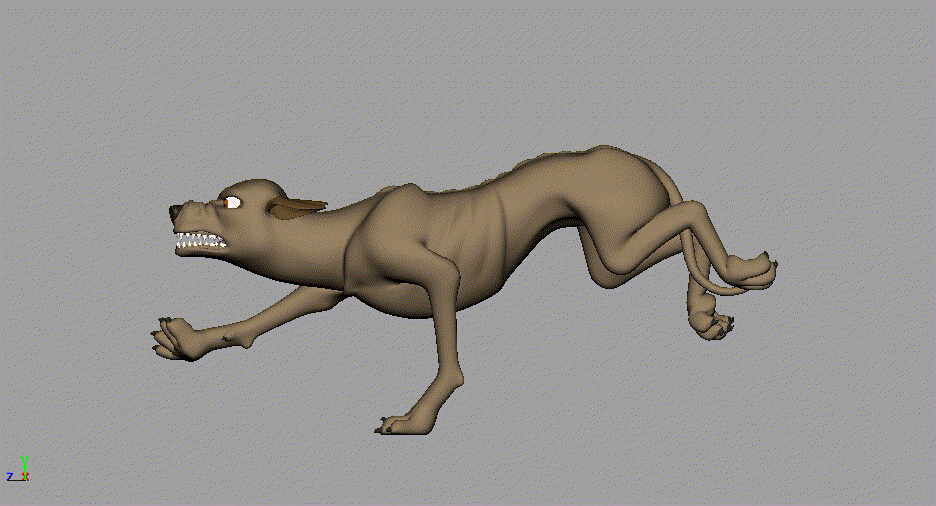Walk
Stalk
Trot
Flying Trot
Canter
Gallop
Animating Quad TIPS!
(There is a lot of great broad information out there on animating quads, so I don't want to re-say what's already been said - and so well! So here are some random tips I have come across while animating quads.)
(There is a lot of great broad information out there on animating quads, so I don't want to re-say what's already been said - and so well! So here are some random tips I have come across while animating quads.)
- Reference Reference Reference! Find it, study it, use it! Making this stuff up might be faster, but its also the fast way street to unbelievable animation.
- If you use a cycle, bake it down, make the feet legit so they aren't sliding around - EVEN if there is grass covering them. YES sliding feet are felt even if you can't see them contacting the ground.
- Dirty up the cycle so you get variation in the movements, so it doesn't FEEL like a cycle. This pass is a lot of fun, because its what makes the animal start to feel believable! Think about what the animal is doing and how its surroundings will affect its movement.
- Simplify the anatomy and understand what is happening beneath all that fur! As a study, I suggest take some of your reference and draw the simplified skeleton over the animal in each frame. Once you hit play it should be more clear as to what is making the animal move and how.
- Scapula's! I feel like this is the secret ingredient for some really impressive quad animation. This is also what will give the animal weight. So it is a necessary component to their movement, but often missed. Cat's scapula's push up the most, dogs some, horses don't break the silhouette, but you still want to animate them since you will feel them sliding beneath the surface.
- Break the hips up from the chest so you don't get "sausage body".
- Floppy ears will obviously have more overlap than pointy, but make sure on the pointy ears you aren't giving them too much overlap. There is cartilage going through them and wont feel believable if they are too floppy. Ears are another way to show thought process and personality! They can almost be like the brows, anticipating movements and showing internal thoughts.
- When you can't easily see the far eye, generally you want to point the nose towards where the animal is looking.
- The timing of the feet in the air versus on the ground. Roughly about 1/3. Most beginning animator key it 50/50. - Ryan Hood
Some of those awesome resources I was talking about...
- Animating Animals Pinterest
- Eadweard Muybridge Studies
- How to Draw Animals by Jack Ham
- The Art of Animal Drawing by Ken Hulgren
- Will Groebe Master Class: Animating Animals
- Animating Animals with FORCE with Michael Mattesi
-Real life!
And if you have tips of your own, please do share! I love this stuff!









